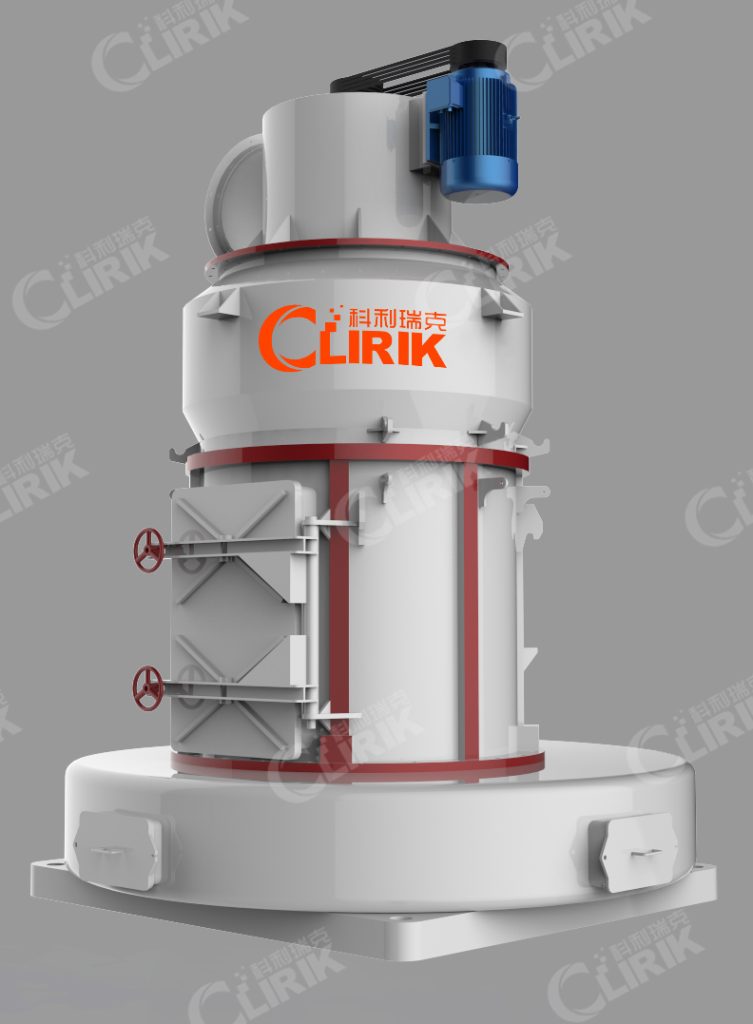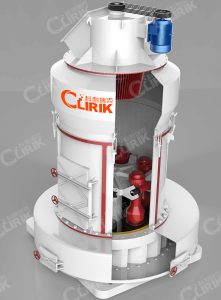
1.Introduction to Raymond Mill
2.Raymond Mill main Structure and Working Principle
3.The Advantages of Raymond Mill
4.Product Specification Parameter



Capacity:1~50t/h
Max feeding size: 35mm
Finished powder:50~325 mesh
Range of application: Barite, quartz, feldspar, mica, calcite, talc, apatite, gypsum, fluorite, limestone, dolomite, diatomite, ceramic soil, clay, marble, granite, fly ash, kaolin, calcium carbonate, slag, bauxite, glass, etc.
Raymond mill is widely used in barite, calcite, potassium feldspar, talc, marble, limestone, dolomite, fluorite, lime, active clay, activated carbon, bentonite, kaolin, cement, phosphate rock, gypsum, glass, insulation materials and other Mohs hardness is not greater than 9.3, The humidity is below 6% of non-flammable and explosive mineral, chemical, construction and other industries of more than 280 kinds of high fine powder processing, R type Raymond mill finished particle size 80-325 mesh range of arbitrary adjustment, some materials up to 600 mesh.

The machine structure is mainly composed of main engine, analyzer, fan, finished cyclone separator, micro-powder cyclone separator and air pipe. The main machine is composed of frame, air inlet volute, shovel cutter, grinding roller, grinding ring and cover shell.

At work, the material to be crushed is added to the machine from the feed hopper on the side of the housing. Due to the role of centrifugal force during rotation, the mill roller swings outward and presses tightly on the mill ring, while the blade scoops up the material between the mill roller and the mill ring and crushes the material. After the material is ground, the fan blows into the main case, blowing up the powder, which is sorted by an analyzer placed above the grinding chamber. The fine and coarse materials fall into the grinding chamber and are ground again. The fineness of the material meets the specifications into the cyclone collector with the wind, collected and discharged through the powder outlet, that is, the finished product. The air flow returns to the fan through the return air duct at the upper end of the air collector, and the increased air volume of the circulating air duct is discharged through the exhaust pipe between the fan and the main engine.
1.The machine is a vertical structure, small footprint, an independent system, from raw material rough processing to transportation to powder and final packaging.
2.Compared with other grinding equipment, the screening rate is as high as 99%.
3. The main transmission device adopts closed gear box and pulley, which makes the transmission stable, safe and reliable.
4. The important parts of Raymond mill are made of high quality castings and profiles to ensure the durability of the whole set of equipment.
5. Raymond Mill electrical system adopts centralized control, high degree of automation, can achieve unmanned control.
| Type | Roller | Max. feeding size (mm) | Fineness(mm) | Output (t/h) | Power (kw) | Size (mm) | ||
|---|---|---|---|---|---|---|---|---|
| No. | Dimension (mm) | Height (mm) | ||||||
| YGM 7815 | 1 | 260 | 150 | 15 | 0.613-0.033 | 1-3 | 18.5 | 4300*3500 *5100 |
| YGM 8314 | 2 | 270 | 140 | 20 | 0.613-0.033 | 1.2-4.6 | 22 | 5300*4100 *5200 |
| YGM 9517 | 3 | 310 | 170 | 25 | 0.613-0.033 | 2.1-5.6 | 37 | 7100*5900 *7900 |
| YGM 4121 | 4 | 410 | 210 | 30 | 0.613-0.033 | 2.8-10.5 | 75 | 9200*7250 *9700 |
| MTMM 1600 | 5 | 440 | 270 | 35 | 0.613-0.033 | 5-20 | 132 | 12550*5700 *8350 |